

The Carnegie libraries of Scotland show a great variety of architectural styles, many of which have been hybridised so that they cannot easily be categorised. Kinning Park Library, Glasgow
The building style adopted for Kinning Park library is more akin to the extravagant Scots Baronial mansion houses in nearby Pollokshields than to Glasgow public buildings of its time. It also shows elements of French Rennaisance and local tenemental architecture in an unusal combination.
Coldside Library, Dundee
Coldside library in northern Dundee is a novel variation from the classical norm, with its long single storey curved frontage finished with elaborate end bays.
The site to build the library was donated by Charles Barrie, a former Lord Provost of the city, whose family home had previously occupied the site. When the library was officially opened on 22nd October 1908, Barrie was asked to perform the opening ceremony, which was also attended by Hew Morrison representing Andrew Carnegie. There was a banquet afterwards in the Victoria Art Galleries hosted by Lord Provost Longair. Photograph of Coldside Library, Dundee, 1915
St Roque's Library, Dundee
St Roque's Library was built on vacant ground at Blackscroft, Dundee, owned by the Town Council.
Kingston Library, Glasgow
This was the first Carnegie library to open in Glasgow, and was the only one to share accommodation with other occupiers, namely the Kingston Halls and Police Station. It was designed by R.W. Horn of the Office of Public Works and A. B. McDonald the City Engineer & Surveyor.
The library was officially opened on 8th September, 1904 by the Lord Provost, Sir John Ure Primrose.
Stornoway Carnegie Library, Isle of Lewis
Like Kinning Park, the library at Stornoway in the Western Isles did not have an exclusive building dedicated for the purpose. The library was situated in the Town Hall which was built in 1905. Andrew Carnegie contributed £3000 towards the reading room which opened in 1906 and the Lending Library which followed in 1907.
Clydebank Library, Dunbartonshire
The competition to design Clydebank's Carnegie library was won by A. McInnes Gardner, who had trained under James Miller, who was the architect of the quaint St. Enoch Subway Station in Glasgow's city centre. The library was badly damaged by German bombs during the Clydebank blitz of March 1941, when 11,000 books were lost from the consequent damage. The library was fully restored by 1950 and there are no traces of this damage today.
The library was opened in 1st October 1913.
Falkirk Library, Stirlingshire
Andrew Carnegie donated £5000 for the library, which opened in 1902.
Two years earlier the design competition for the new building had been won by the Edinburgh partnership of David McArthy and John Watson. The competition was assessed by George Washington Browne, the architect of the Central Library in Edinburgh.
It is constructed in red sandstone, which is unusual for public buildings in this area, where the local quarries produce cream and grey sandstones.
Springburn Library, Glasgow
Springburn library is in an unusual pavilion style, quite unlike any of the other Glasgow Carnegie libraries.
The library was officially opened on 1st May, 1906 by Bailie Patrick O'Hare (right) who was Glasgow's first Roman Catholic magistrate since the Reformation. O'Hare originally hailed from County Monaghan in Ireland, before he settled in Glasgow.
Townhead Library, Glasgow
This was the last library to be built with Carnegie's 1901 grant to the people of Glasgow, and marked the end of an amazing expansion to the city's library system at the beginning of the 20th century. Additional funding was supplied at the end of the decade to complete the programme of library building.
The library was officially opened on 4th July, 1907 by Sir James Fleming.
Bonnyrigg Library
The Carnegie Library in Bonnyrigg, Midlothian is slightly different from most of the others built at the time in that it has a harled exterior rather than the usual stone finish. The sandstone trims around the doors and windows are used sparingly to give a nice contrast to the grey harling.
The fishing ports of north-eastern Scotland have some interesting Carnegie libraries built with local materials. The libraries at Fraserburgh (left) and Banff (right), illustrated above, date from the beginning of the century. The people of Fraserburgh adopted the Libraries Acts in 1903 and very little time was wasted in erecting their new library, which was officially opened by Lord Saltoun on 23rd October 1905. It was built in the French Renaissance style, which was so fashionable for many of the libraries built in Scotland at the time.
In contrast to the grandiose elegance of Fraserburgh, the two-storey library in Banff is relatively plain and is sited hard onto the High Street. It was fashioned as an austere town house with a symmetrical frontage of random rubble with ashlar trims.
The earliest of the libraries built in this part of the world was in Peterhead where the Libraries Acts were adopted in 1890. Carnegie made a contribution of £1000 towards the construction costs of the proposed Public Library and Arbuthnott Museum for which the local citizens had raised over £2150. The architect was Duncan McMillan of Aberdeen, whose design was chosen from the twenty submitted.
Period photograph of Peterhead Library
Aberdeenshire also boasts Scotland's smallest Carnegie building which can be found in the village of Tarves, north-west of Aberdeen. The Carnegie Library Room was added to the Melvin Hall in 1892. its ultra-plain, random rubble frontage does not even have the width of a domestic garage. In sparsely populated areas such as the north of Scotland and the west of Ireland, Carnegie granted the funds for extremely modest buildings which have no counterparts in the United States.
The library at the coastal village of Torryburn, six miles away from Dunfermline, is of the same proportions and style as the nearby housing.
There are examples of classical and classically influenced designs which are common throughout the world.
The breadth of this assortment of building forms can be seen in the libraries shown below.
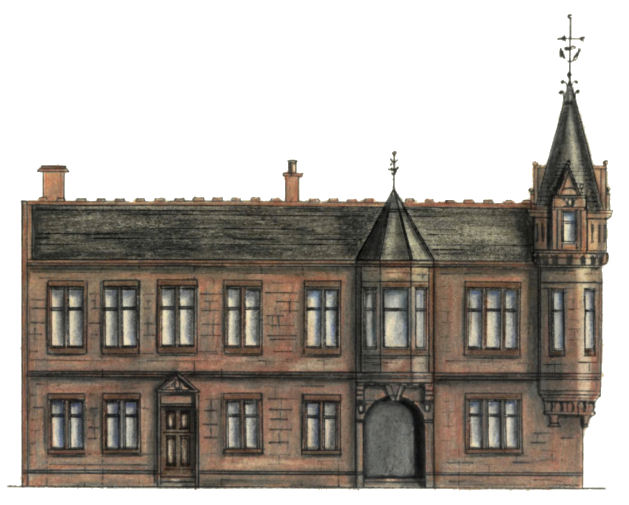
The architect, Donald Bruce, was a partner in the firm of Hay & Bruce, as well as being the Burgh Surveyor. He was also the architect of the massive neo-classical Co-operative building in Morrison Street, Glasgow.
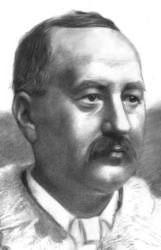
This library was officially opened on 25th October, 1904 by Provost Thomas McMillan (right) in one of the final events of the burgh of Kinning Park which had a short independent existence of a mere 34 years, from September 1871 until November 1905.
The library building was built with a grant of £5000 in 1901 from Andrew Carnegie to the burgh council, but a year after its opening Kinning Park was absorbed into the city and the library became a Glasgow branch.
The library closed in 1967 and was used as a store by the Council's Social Work Department until its demolition in 1978.
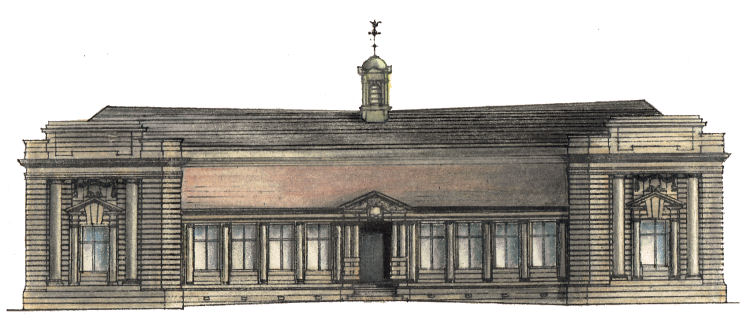
James Thomson, who had been appointed City Architect in 1904, designed all of Dundee's Carnegie libraries with the exception of Arthurstone which had been started by his predecessor. Thomson thought that neo-classicism was the correct style to maintain civic dignity, and he used a unique interpretation of his ideas with Coldside library.
Thomson was also an early pioneer of town planning and the modern thinking about cities that accompanied the new century. He had idealistic views about leaving beautiful planned cities for future generations. His libraries and other public buildings went some way towards achieving a planned order in early twentieth century industrial Dundee.
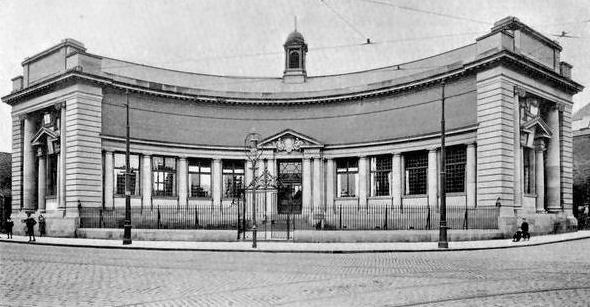
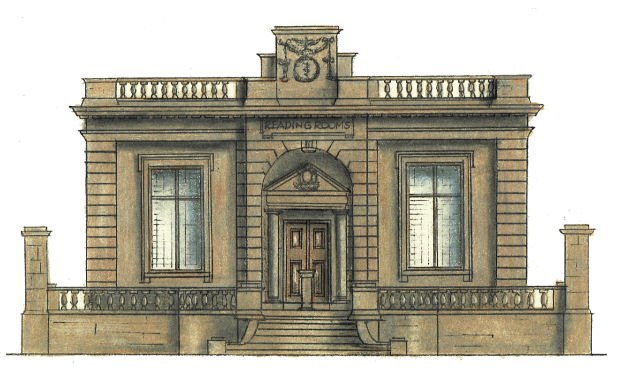
The site was laid out as a landscaped garden in the Italian style, in an attempt to upgrade what was described at the time as a "sordid district". Many Edwardians held the belief that by improving a district you could improve the people who lived there; they may even have been right!
The library was used as a reading room and delivery station for any of the 100,000 books held by the Dundee Central Library at the Albert Memorial Institute.
James Thomson, Dundee's City Architect, produced a design with the library as an integral part of the Mediterranean terrace and garden, featuring a fountain as well as a sundial among the trees and flowers.
The library was opened on 9th December, 1910 by a Mrs Urquhart of Dundee.
Its current use is as a night club.

The library is situated on the eastern end of the elegant red sandstone Public Halls, to which it gives the appearance of being somewhat of an afterthought. There is a scholarly figure placed above the library entrance.
The building finally closed in 1981 after the population had moved away and has been for some years been occupied as a night shelter for Glasgow's ever-present homeless population.
Its current use is as a night shelter.
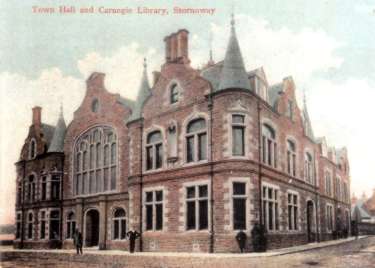
The turreted structure was designed by John Robertson of Inverness in a loosely continental style. It was built of local red sandstone finished with light cream dressings at the doors and windows. The Town Hall closed in 1979 for redevelopment, leaving the library without a permanent home until 23rd March 1999 when a new building opened nearby.
The above illustration and the information regarding the library, was kindly supplied by David Fowler, Senior Librarian, Stornoway.
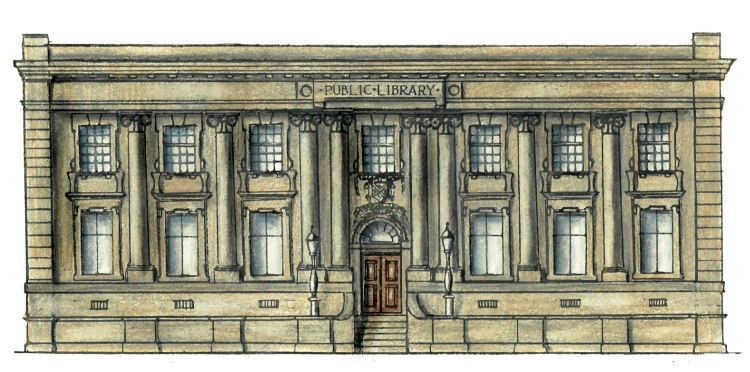
The library has a symmetrical seven-bay neo-classical frontage with a central entrance, flanked on each side by highly decorative Ionic columns. It was constructed with a warm gold coloured sandstone, which has been cleaned of the town's industrial grime to reveal its original fine colour.
The original librarian Harry Pincott, had remained in post from 1913 until his death in 1945.
Its current use remains as a branch library.
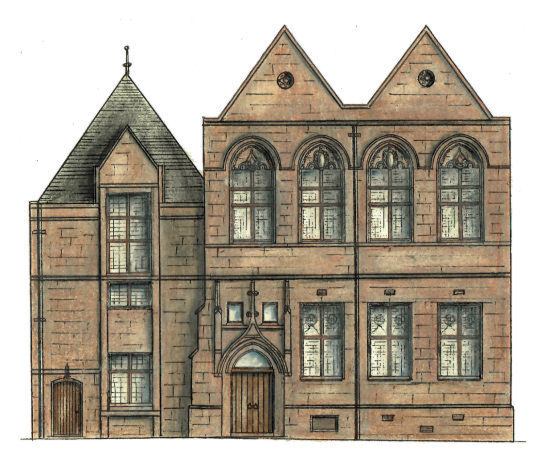
The library building has a novel design style with a twin gabled Gothic façade, which shows very little of the usual classical influences.

The spacious interior enjoys lots of natural light from a glass dome similar to those at Woodside Anderston and Townhead.
The architect, William. B. Whitie also designed Glasgow's Mitchell Library, although the Baroque influences seen in the Mitchell are not so evident at Springburn.
The site was donated by Neilson Reid & Co., Engineers. It had previously been part of their Hydepark Locomotive Works.
Cowlairs Co-op gave the new library £50 to purchase books on engineering and local industries. Springburn has traditionally been a centre for heavy industry.
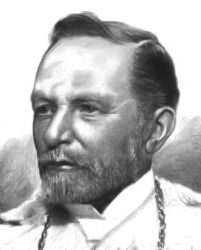
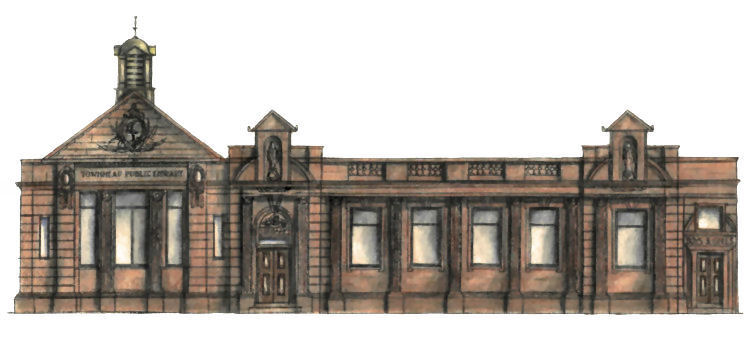
It was built to an Italian themed design by the architect, John Fairweather, who was later to specialise in cinemas and theatres.
The library had a pedimented north bay with a bush motif placed in the stonework.
There was an upper balustrade similar to those at the libraries in Springburn and Woodside. This featured two life sized statues by James. C. Young placed in niches along the line of the parapet. The statues represented allegorical figures of Knowledge and Learning.
The reading room had a most attractive arched ceiling with rooflights, while the lending library had an ornate glass dome overhead.
After lying in a state of neglect and dereliction in the shadow of the M8 motorway for many years, Townhead Library was finally demolished in 1998.
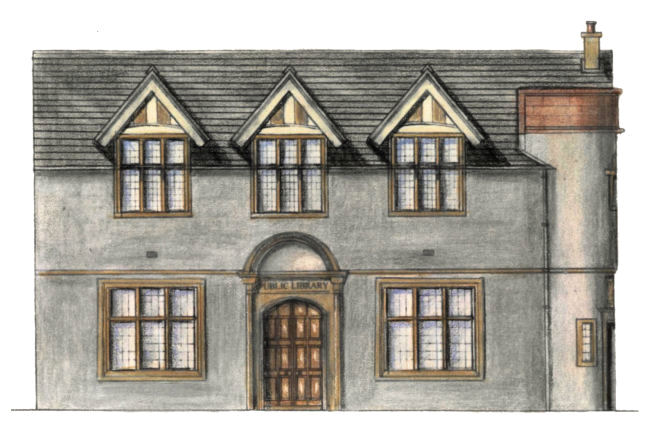
Opened 1908
The library was designed by the Edinburgh practice of Greig, Fairbairn and MacNiven who continued with a similar design for the nearby Parish Council offices which opened a year later in 1909. This partnership were also responsible for the Carnegie Library in Motherwell.
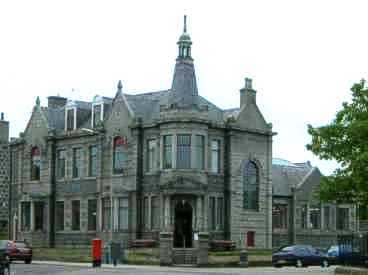
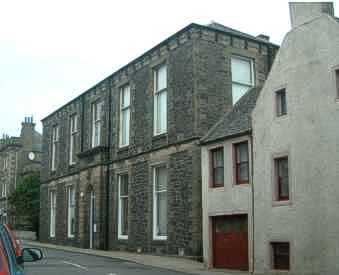
The design competition was won by local architect, William Stephen Fergusson Wilson, who also designed the town's Post Office. The corner site on King Edward Street is used to full advantage giving attractive façades either side of the central turreted entrance which features a large bay window at first floor level. Wilson emigrated to Canada shortly afterwards, where he went on to design some churches in Toronto, Ontario, before his death in 1939. 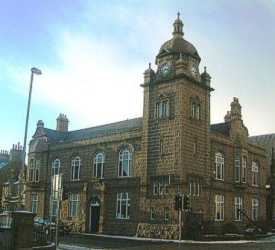
It was built with locally quarried granite with two façades designed in continental Rennaisance style. The composition was completed with an elaborately turreted clocktower at the corner to set it apart as a local landmark.
The foundation stone was laid by Mrs Carnegie at a ceremony on 8th August 1891, while she and her husband were spending the summer at Skibo. The Museum and the Library Newsroom were opened to the public on 12th October 1893 and the Lending Library on 28th May 1894.
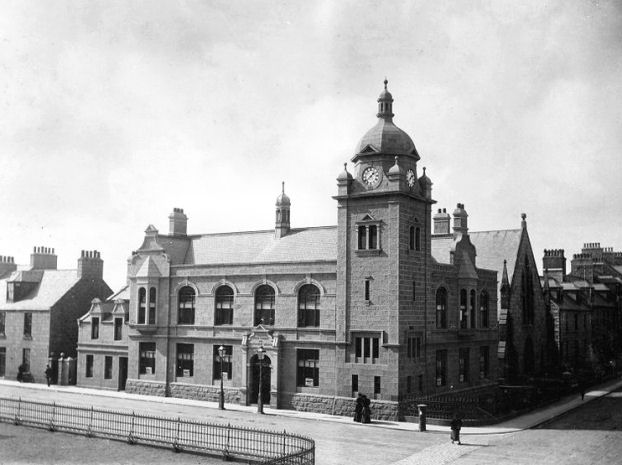
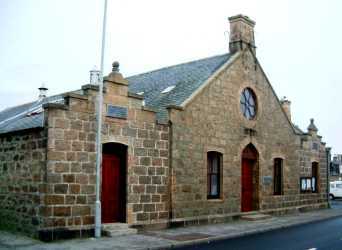
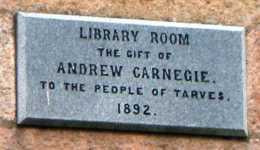
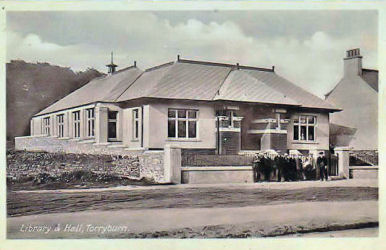
The library was formally opened on Friday 3rd November 1911 by Dr. John Ross, chairman of the Carnegie Dunfermline Trust.
A grant of £1000 had been given to the parish for the erection of a public library and hall.
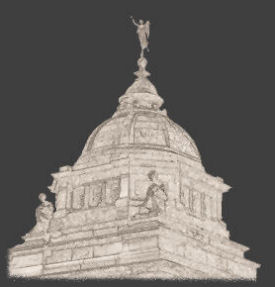 |
| |
|
|
|
|
|
|
|
|
|
|
|
|
|
|
|
|
|
|
|
|
|
|
|
|
All original artwork, photography and text © Gerald Blaikie
Unauthorised reproduction of any image on this website is not permitted.